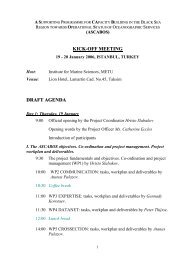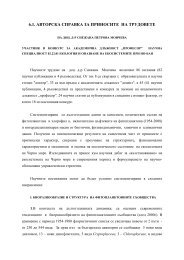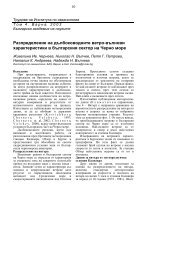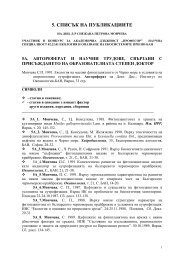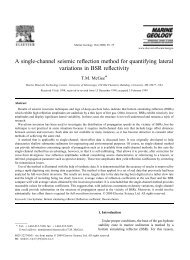A new correlation for predicting hydrate formation conditions for ...
A new correlation for predicting hydrate formation conditions for ...
A new correlation for predicting hydrate formation conditions for ...
Create successful ePaper yourself
Turn your PDF publications into a flip-book with our unique Google optimized e-Paper software.
( )A.A. Elgibaly, A.M. ElkamelrFluid Phase Equilibria 152 1998 23–42 39Table 6Relative importance of the various inputs in the general compositional modelInput Relative importance Ž %.T 14.1C111.2C 7.852C 8.963i-C 4.964n-C 4.194C55.51qC 3.926CO 6.302N 6.362H 2S 4.90MeOH 8.48Nacl 6.21EG 3.71CaCl22.20EtOH 1.45results showed that temperature has a relative importance of 42% while gravity has a bigger share of58%.3.6. Integration with a dosing control systemHydrate <strong>for</strong>mation control should be considered to be an on-line service activity. The <strong>for</strong>mation of<strong>hydrate</strong>s can be avoided by introducing computerized systems along with monitoring instruments andon-line data collection. The objective is to <strong>for</strong>mulate prompt and reliable remedial actions by injectingthe appropriate amount of inhibitor <strong>for</strong> the measured temperature and pressure of the system. Thistype of ‘modern strategy’ <strong>for</strong> inhibition will minimize the cost of chemicals used <strong>for</strong> inhibition of<strong>hydrate</strong> <strong>for</strong>mation, and maximize systems effectiveness.In order to determine the required amount of an inhibitor to avoid the <strong>for</strong>mation of <strong>hydrate</strong>s withina system, the comprehensive compositional neural network model Ž Model-D.presented in this papercan be used. This can be done by invoking a valuable property of a neural network: the ability tosolve the inverse problem of determining the amount of an inhibitor Ž <strong>for</strong> instance.that will lead to no<strong>hydrate</strong> <strong>for</strong>mation at the current temperature, pressure and composition of other components. Thus,one can envision the proposed neural network model-D to be integrated within a generalized inhibitorcontrol system consisting of monitoring instrumentation and on-line data collections. The study ofsuch integration will be the subject of further research.4. Concluding remarksUtilization of the neural network technique <strong>for</strong> <strong>predicting</strong> the <strong>hydrate</strong> <strong>for</strong>mation <strong>conditions</strong> hasbeen investigated in the present study. The technique has been applied on a total of 2387 experimental







